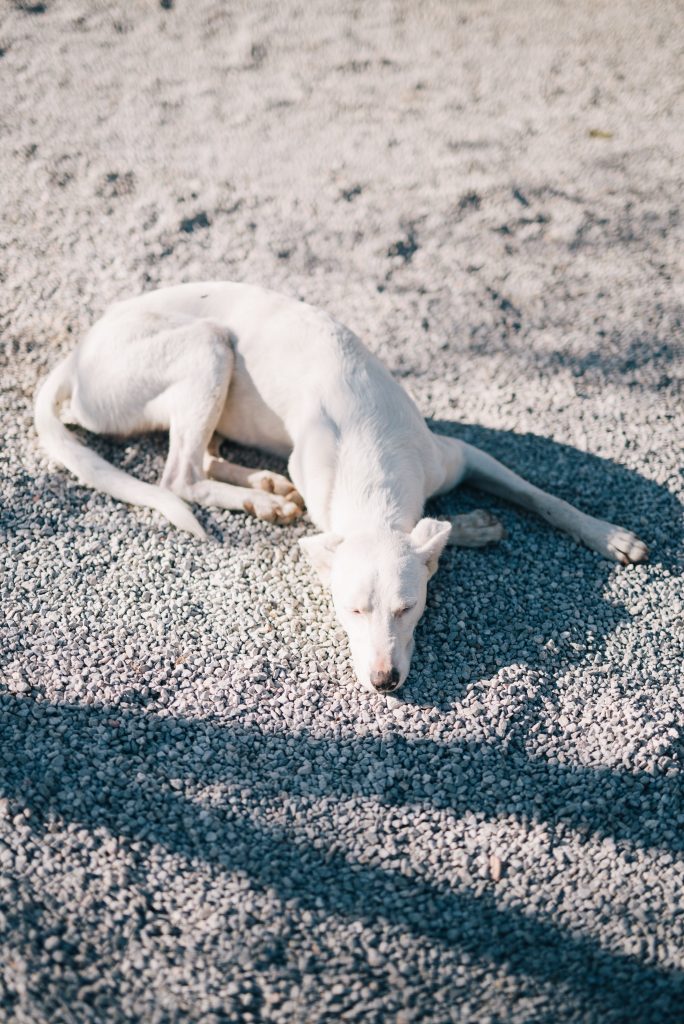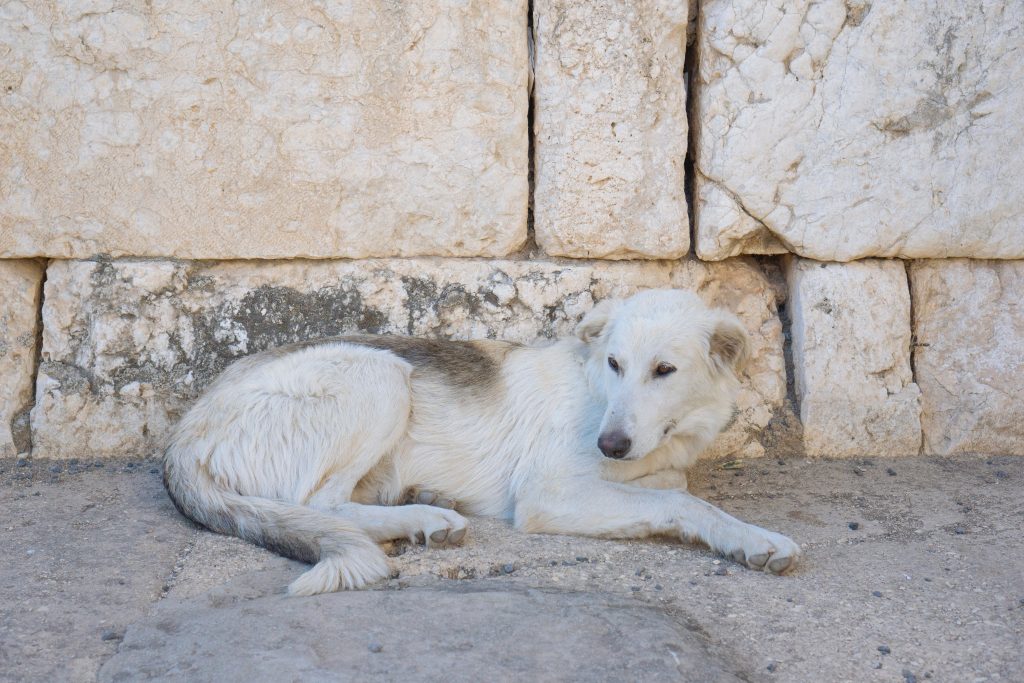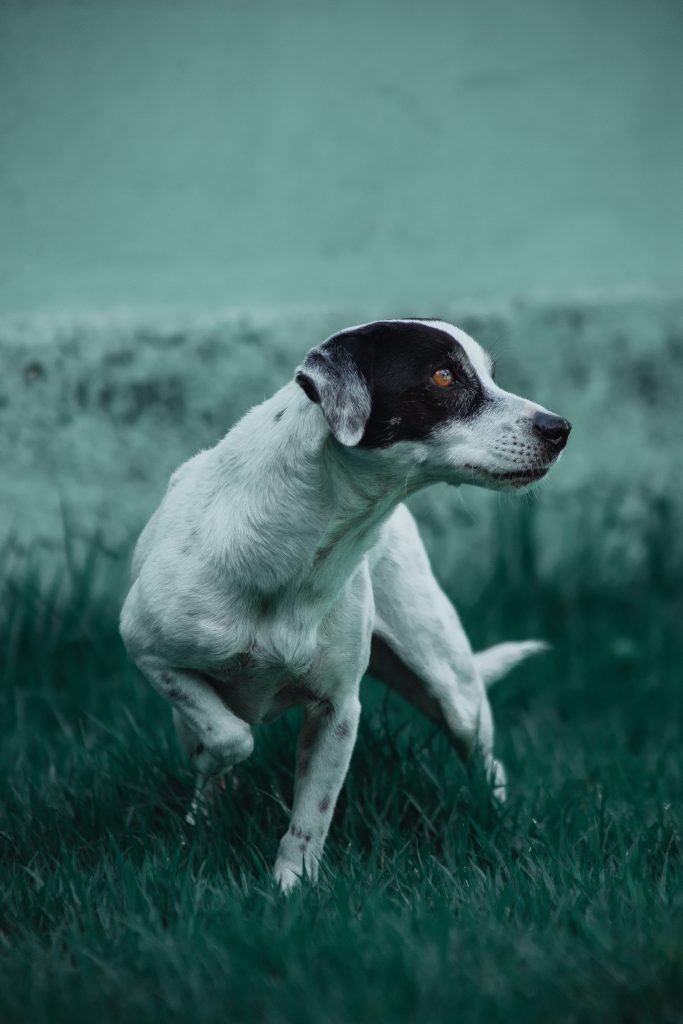“Has your dog’s coat started to lose its color and you wonder why? It is a common occurrence that dogs turn grey or white as they age, just like humans do. This blog will guide you through the possible reasons behind this change, from natural aging to certain medical conditions. Why is my dog turning white?
Read on to discover what might be causing your furry friend’s hair transformation!”.

Key Takeaways
- Dogs often turn grey or white as they age, just like humans do. This is a normal part of the aging process.
- Genetics play a role in determining why a dog’s fur may be turning white. Certain breeds are more prone to developing white fur as they get older.
- Stress can also cause a dog’s hair to turn white. Chronic stress and anxiety can impact their physical well-being, including their coat color.
- Medical issues like vitiligo or imbalances in thyroid hormones can contribute to a dog’s fur turning white. It’s important to consult with a veterinarian if you notice any unusual changes in your dog’s coat color.
Why Do Dogs Go Grey?
Dogs go grey due to the aging process, genetics, stress, and medical issues.
Aging process
Dogs get white fur as they grow old. This change often starts when a dog is between 7 and 10 years old. It’s like people getting grey hair as they age. The process is slow at first, but speeds up over time.
The hairs around the muzzle usually turn white first. This happens because less color pigment gets made in the body of an older dog. No need to worry – it’s a normal part of aging for dogs!
Genetics
Genetics play a big role in determining why your dog’s fur may be turning white. Certain breeds are more prone to developing white fur as they age. It’s a natural occurrence for some dogs, just like humans getting gray hair as they get older.
The process usually starts between 7 and 10 years of age, but it can vary depending on the breed and individual factors. Decreased production of melanin, the pigment that gives color to the hair, is responsible for the whitening effect.
So, if your furry friend is starting to show signs of gray or white hair, it could simply be due to their genes.
Stress
Stress can also be a factor in a dog’s hair turning white. Just like humans, dogs can experience stress and anxiety, which can affect their physical well-being. Chronic stress in dogs has been linked to premature greying or whitening of the fur.
This means that if your dog is consistently stressed or anxious, it could potentially lead to their hair turning white earlier than expected. It’s important to make sure your dog is in a happy and calm environment to help prevent any unnecessary stress that could impact their coat color.
Medical issues
Medical issues can sometimes cause a dog’s fur to turn white. One condition is vitiligo, which leads to patches of white hair or scattered white hairs in the coat. Other medical conditions like lupus can also result in white hair development.
Additionally, imbalances in thyroid hormones and nutritional deficiencies may contribute to changes in coat color, including turning white. It’s important to consult with a veterinarian if you notice any unusual changes in your dog’s fur color, as they can determine the underlying cause and provide appropriate treatment if necessary.

Is My Dog Going Grey Early?
Is your dog’s fur turning white earlier than expected? Find out the reasons behind premature greying and its possible connections to genetics and stress. Discover if medical conditions can also contribute to this phenomenon in dogs.
Geriatric vs progressive greying
As dogs age, it’s common for their fur to start turning white. This is known as geriatric greying. It happens naturally over time and is a normal part of the aging process. On the other hand, some dogs may experience progressive greying at a younger age.
This can be influenced by genetics, stress, or certain medical conditions. For example, if your dog has premature grey hair before reaching 7 years old, it could be due to genetic factors or chronic stress they’ve experienced.
While geriatric greying is nothing to worry about, premature greying might indicate underlying issues that should be addressed by a veterinarian.
Premature greying
Premature greying in dogs refers to when a dog’s hair starts turning white at a young age. While it can be surprising, especially if your dog is still considered young, it is usually nothing to worry about.
In fact, premature greying in dogs is often just an aesthetic concern and not a sign of any underlying health issues. Factors like genetics and stress can play a role in causing premature greying in dogs.
So if you notice your furry friend developing grey hairs earlier than expected, don’t fret too much – they’re just getting wiser with age!
Influence of genetics
Genetics play a big role in why your dog’s fur may turn white as they age. Certain breeds are more prone to developing white hair, so it might be something inherited from their parents.
As dogs get older, the production of melanin, which gives color to their fur, can decrease. This can lead to the whitening of their hair. So if you notice your dog’s fur turning white, it could just be a natural part of the aging process and nothing to worry about.
Influence of stress
Stress can have an impact on a dog’s fur turning white. Chronic stress and anxiety can sometimes result in premature graying or whitening of a dog’s fur. This means that if your dog is frequently stressed or anxious, their hair may start to turn white earlier than expected.
It’s important to keep an eye on your dog’s emotional well-being and provide them with a calm and supportive environment to help prevent this from happening.

Can Medical Issues Cause Greying?
Medical issues can sometimes cause greying in dogs, such as the skin condition vitiligo or imbalances in thyroid hormones that can lead to changes in coat color including turning white.
Vitiligo
Vitiligo is a skin condition that can cause patches of white fur to appear on your dog’s body. It happens when the pigment cells in their skin stop producing melanin, which gives color to their fur.
The exact cause of vitiligo in dogs is unknown, but it’s believed to be an autoimmune disorder. While vitiligo might not pose any health risks for your dog, it can be concerning for some owners who notice these changes in their pet’s appearance.
If you suspect your dog has vitiligo or any other medical issue, it’s always best to consult with a veterinarian for proper diagnosis and guidance.
Other medical conditions
There are various medical conditions that can cause a dog’s fur to turn white. One example is vitiligo, which is a skin condition that leads to patches of white hair appearing on the dog’s body.
Additionally, diseases like lupus can also cause white hair to develop in a dog’s coat. It’s important to note that while these medical conditions can change your dog’s appearance, they may not necessarily be harmful to their health.
If you notice any unusual changes in your dog’s coat color or overall health, it’s best to consult with your veterinarian for proper diagnosis and treatment.

Conclusion
In conclusion, if you notice your dog’s fur turning white, it is often a natural part of the aging process. However, there can be other factors like genetics, stress, or medical conditions that contribute to premature greying.
Remember to consult with a veterinarian if you have any concerns about your dog’s coat color changes.
FAQs
1. Why is my dog’s fur turning gray?
Your dog’s fur is turning white because of the natural aging process, changes in pigment cells, or early onset of gray hair.
2. Can there be any medical reasons for my black puppy’s fur to turn gray?
Yes, health issues such as thyroid imbalances, vitiligolike conditions and nutritional deficiencies can cause your black puppy’s hair to turn gray at a young age.
3. Is premature graying of fur normal in dogs?
Premature graying in dogs can occur due to genetics or stress. However, it might also signal a medical concern if noticed together with other signs like change in behavior or appetite.
4. What causes the canine hair discoloration?
Canine hair discoloration could be happening from an overproduction of pigment called hyperpigmentation or loss of melanin producing pigment cells which leads to graying.
5. How does aging impact a dog’s fur color?
As dogs get older their decrease in melanin production often leads to their dark colored coat turning light or white especially on their muzzle area signifying the aging process has begun.
6.Are there environmental factors involved with my dog’s grey hairs ?
Yes! In some cases exposure to certain chemicals and toxins may lead your pet’s coat color changing into white prematurely.


